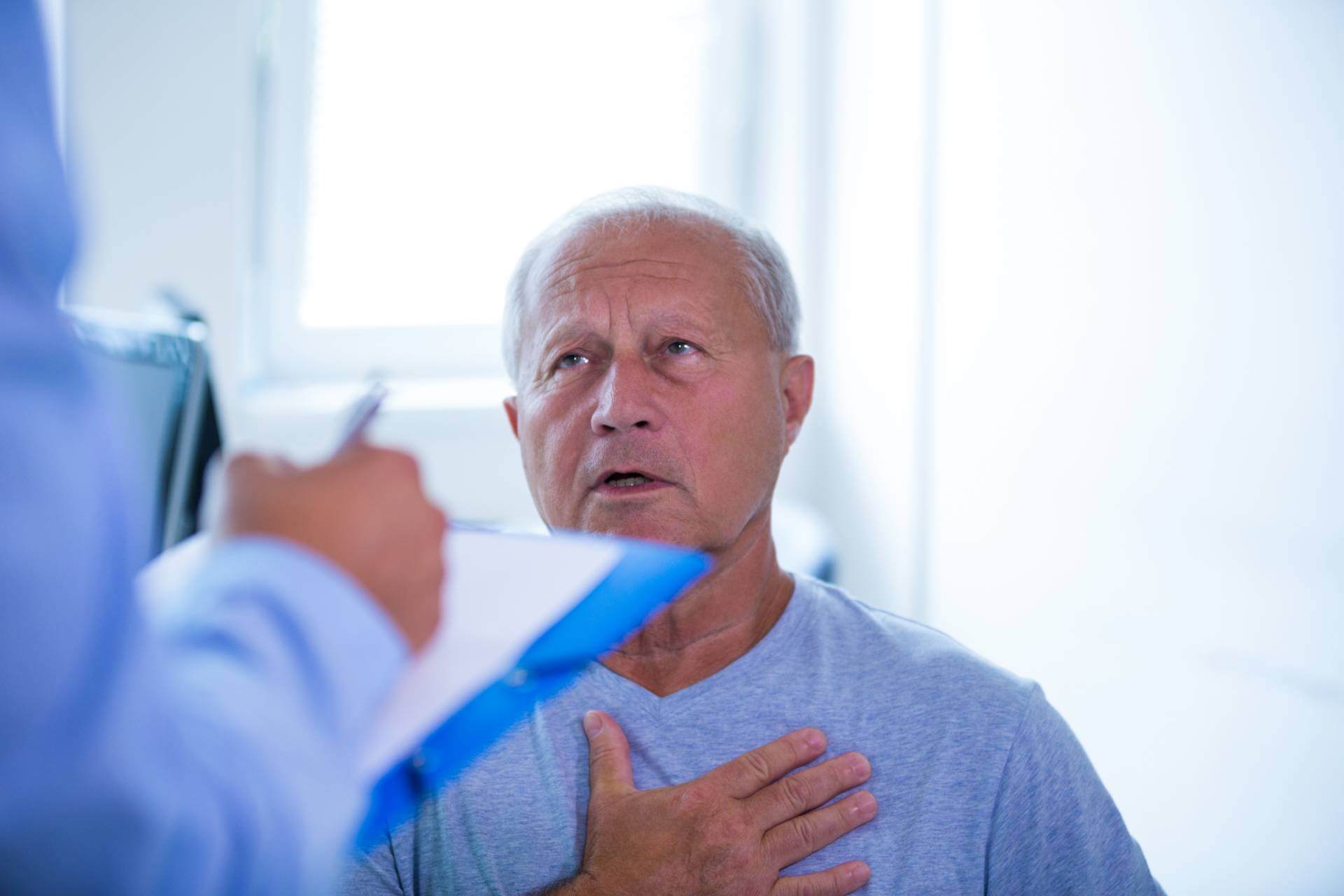What is esophagogastroduodenoscopy?
An esophagogastroduodenoscopy (EGD) is a gastrointestinal procedure in which a long, narrow, soft tube — or “scope,” as it is also known — is placed into a patient’s mouth and snaked through to the duodenum (the beginning of the small intestine). The scope includes a light and camera at the end, which allows our physicians at Hattiesburg GI Associates, PLLC to easily look at the lining of the esophagus, belly, and the beginning of the small intestine.
An esophagogastroduodenoscopy may be suggested to determine the cause of gastrointestinal symptoms, including abdominal pain, heartburn or acid reflux, difficulty swallowing, bleeding, or abnormal x-ray results. We may also perform an EGD for Hattiesburg, MS patients with constant symptoms of heartburn to search for changes that could be an indication of esophageal cancer. Should you need an EGD, please schedule an appointment with a gastrointestinal specialist at Hattiesburg GI Associates, PLLC.
What are the benefits of an EGD?
Undergoing an EGD is beneficial for a variety reasons. It can permit your GI specialist to directly assess your esophagus, stomach, and duodenum (which is the first part of the small intestine). Further benefits of an EGD include:
- Helps in detecting a number of GI issues (such as GI infections, Crohn’s disease, GERD, celiac disease, and others)
- Allows for polyp removal, tissue biopsies, and additional small procedures
- May help discern the causes of certain symptoms, such as nausea, vomiting, pain, and heartburn
- Generally provides a quick, safe, and efficient process

What can I expect the day before my EGD?
You will receive pre-op instructions from your gastrointestinal provider explaining the essential preparatory steps for an EGD. Many of our Florida patients will be able to eat normally the day before the esophagogastroduodenoscopy. Our GI providers may request you not to eat or drink after midnight except for medications. It is crucial that you abide by the requirements requested from our office at Gastroenterology Associates of Florida. We will also provide extra instructions as it pertains to any medications you take. In most cases, you can take your medications as you normally would. In certain circumstances, this may not be the case, particularly if you take blood thinners (i.e., Plavix®, Coumadin®, warfarin, anti-inflammatories, aspirin) or if you have diabetes. If this pertains to you, we will give you special instructions.
What can I expect on the day of my EGD?
It’s advised that you show up at our Florida office at least an hour before your exam. You’ll need to change into a hospital gown. An intravenous (IV) catheter will be started in your arm so we can begin the sedation process. You will be connected to equipment that will allow your GI specialist to keep track of your heart rate, blood pressure, oxygen levels, and much more during and after your exam.
Once you’re in the exam room at Gastroenterology Associates of Florida, we’ll ask you to relax on your left side on our exam table. Sedation will be started. After you’re sedated, the endoscope will be inserted into your mouth. The scope will be strategically advanced through your esophagus, stomach, and duodenum. Injecting a small amount of air through the scope into the gastrointestinal tract will help us see better. Any fluid remaining in the upper gastrointestinal tract will be cleared away through the scope. Based on the results of the exam, a number of things could be implemented, including biopsies, the removal of polyps, and control of bleeding. Typically, the exam takes approximately 10 – 20 minutes. Following your exam, you will be taken to one of our comfortable recovery rooms to be monitored as the sedation wears off.
About when will I receive my results?
After your exam, our team will go over the findings of your procedure with you. Many patients don’t remember what they were told later on because of the effects of the sedation. It is recommended you bring a family member with you for a second pair of ears. We can also give you a typed-up review of what we discussed. In a number of situations, we’ll provide you with biopsy results in a week.
Does an EGD carry any risks?
In general, an EGD is a very safe procedure. Generally, difficulties arise in fewer than 1% of patients. Typically, these issues are not life or death; although if an issue arises, it could result in hospitalization and surgery. Before beginning your exam, a consent form will be reviewed with you by the nursing staff. Should any questions or concerns arise, you can discuss these with your physician before your treatment.
As with other tests, an EGD is not perfect. There is a small possibility that abnormalities, such as cancers, may not be discovered during the esophagogastroduodenoscopy. It is crucial to continue to follow up with our gastrointestinal doctors and keep them abreast of any recent or persistent issues.
What are alternatives to an EGD?
Generally, your substitutes for the esophagogastroduodenoscopy will hinge on the reason for requesting an esophagogastroduodenoscopy. Most often, an EGD at Gastroenterology Associates of Florida is the best treatment to evaluate and take care of abnormalities in the upper GI tract. However, an upper GI/barium swallow, a special type of x-ray, can assess the upper GI tract also. This is, keep in mind, just a diagnostic exam. Treating these abnormalities might require an esophagogastroduodenoscopy or surgery.

Relieve your GI symptoms with an EGD
EGD FAQs
Does EGD mean the same thing as upper endoscopy?
An EGD might be referred to by a few different names. Sometimes, it may be referred to as an “upper endoscopy” or a “gastroscopy.” Though these terms may vary, they are typically the same procedure as an esophagogastroduodenoscopy.
What is considered a "normal" result for an EGD test?
Receiving normal results for an EGD generally indicates that your GI provider did not detect abnormalities in the upper part of the gastrointestinal tract. However, normal results might be signified by a normal color and smooth texture in the esophageal, stomach, and duodenal areas. Furthermore, there should not be any signs of inflammation, bleeding, or growths in these tissues. It’s important to remember that a “normal” result doesn’t always rule out all health conditions. Some issues might not be apparent during an esophagogastroduodenoscopy or could be present further down in the GI tract, outside the field of the endoscope device utilized to conduct the examination.
When might an EGD be recommended?
Your Gastroenterology Associates of Florida specialist may recommend an EGD if you have Crohn’s disease or liver cirrhosis to help monitor such conditions. In addition, an EGD test may be ordered if you are experiencing:
- Tarry or black stool
- Vomiting of blood
- Heartburn
- Pain or discomfort in the upper abdomen
- Issues with swallowing
- Unintentional weight loss
- Persistent nausea
What should I bring to my EGD appointment?
When you arrive for your esophagogastroduodenoscopy procedure, you might be asked to fill out some patient forms. It is important to carry your identification and insurance card with you to your appointment. It also may be a good idea to carry a written list of nonprescription and prescription medications you take, their dosages, and the reason for taking them. We recommend that you keep jewelry and other valuables at home.
